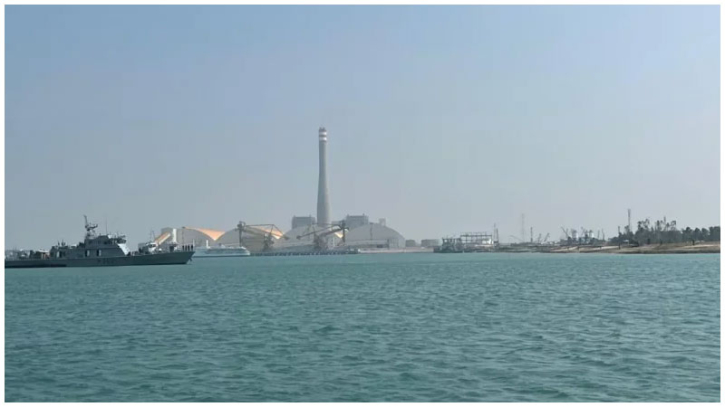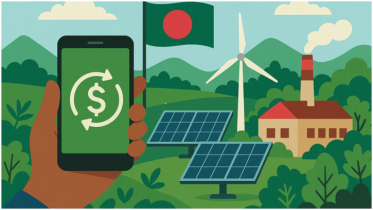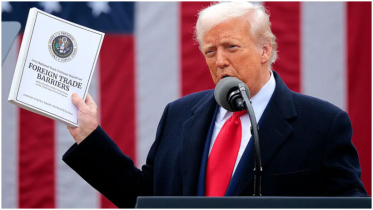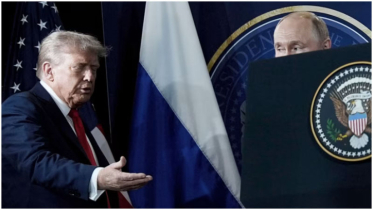Moheshkhali–Matarbari master plan: Bangladesh's $150bn vision

Like the outgoing Awami League government, the interim government of Bangladesh, led by Professor Dr Muhammad Yunus, has unveiled an ambitious master plan to transform the coastal belt of Cox’s Bazar’s Moheshkhali and Matarbari areas into a commercial and industrial hub, aiming to create a modern township with a port similar to global giants like Singapore and Shanghai.
This long-term project integrates a deep-sea port, energy terminals, power plants, manufacturing zones, and fisheries into a single, comprehensive economic zone.
Chowdhury Ashik Mahmud Bin Harun, executive chairman of the newly formed Moheshkhali Integrated Development Authority (MIDA), revealed this information to the media on Wednesday, after presenting the project plan to the chief adviser.
Earlier, the Awami League government chose Matarbari for its natural deep-sea draft of around 18.5 meters and the availability of vast land to make this area a commercial and industrial hub.
However, after the fall of the government in the July-August mass uprising of 2024, the project also slowed down, like other projects.
At that time, the Ministry of Shipping was primarily working on the Matarbari deep-sea port project, which was a limitation to conducting this extensive master plan.
However, this time the interim government has formed a new authority named MIDA that will solely work on this lengthy project.
When asked, Ashik Chowdhury, who also chairs the Bangladesh Investment Development Authority (BIDA), said: “Bangladesh’s commercialization is a common agenda, it’s not a political agenda. We may see six governments in the next 30 years, but every government must align with this common vision. That’s why we are building this authority to align all the ministries together.”
“33,000 acres of lnd were planned for the project undertaken in 2018, and we are keeping it the same but making our plan more detailed, and obviously, this plan can be changed in the forthcoming years also,” Ashik added.
Economic Impact and Investment Potential
According to a JICA study, investments in MIDA could reach $60–65 billion over the next 20–30 years, with private investment accounting for about $47–48 billion, including 10% foreign direct investment.
The initiative is projected to add $150 billion to Bangladesh’s GDP, with direct contributions of $70–75 billion, while creating 1.5 lakh direct jobs and supporting 2.5 million jobs in total.
Tourism in Cox’s Bazar is also expected to receive a significant boost, with the number of visitors projected to increase by 1.5 times once the project is completed.
Four Development Pillars
The MIDA Chairman has presented four development pillars for this masterplan, including a deep-sea port, a manufacturing hub, a power and energy hub, and a deep-sea fishing and processing facility.
The upcoming Matarbari deep-sea port is expected to increase Bangladesh’s overall port capacity by 50% over the next three decades, through handling 25% of bulk cargo and 45% of container traffic.
Unlike Chittagong port, its natural depth will allow large vessels to dock directly.
Improved logistics are expected to reduce shipping costs, with the price of a 12kg LPG cylinder projected to drop by Tk50. Supporting facilities will include freight stations, expanded roadways, and upgraded rail links.
The zone will foster industrial growth in at least nine sectors, including steel, agro-processing, automobile, electronics, pharmaceuticals, synthetic fibers, and shipbuilding.
Within 30 years, it is expected to contribute approximately 10% of Bangladesh’s total manufacturing output, while saving $6 billion annually in balance of payments through improved supply chains.
With power demand growing at nearly 6.7% annually, MIDA will serve as a major energy hub, handling 80% of LNG and 60% of LPG imports.
Plans include an 8–10 MTPA petroleum refinery, expected to meet 35% of national demand and save $3.4 billion in logistics costs.
The initiative also envisions scaling up renewable energy facilities to strengthen energy security.
As part of Bangladesh’s blue economy drive, the initiative will enable deep-sea fishing beyond 100 meters with modern longliner vessels.
Enhanced port facilities will accelerate exports of shrimp and other seafood, while scallop processing alone is estimated to unlock a $500 million export market.
Infrastructure and Roadmap
MIDA will make access roads, rail links, and township development phase by phase.
The interim government has already launched a 120-day work plan beginning in 2025, involving more than 10 ministries and agencies.
A comprehensive MIDA Master Plan is expected by year-end, guiding the phased rollout of incubation, expansion, and diversification projects.
“To fully harness the region’s strengths, the long-term vision is divided into three phases: incubation, expansion, and diversification. We have launched a 120-day work plan in the last quarter of 2025, involving collaboration among more than ten government organizations and ministries. This effort aims to finalize the MIDA Master Plan by the end of the year, marking the first step toward establishing MIDA as a leading economic hub,” said Ashik.
He also noted that the work plan had already been submitted to Chief Adviser Professor Muhammad Yunus.
Ashik said that currently MIDA has only three members: one bureaucrat, one Navy officer, and himself.
A fourth member will be from the Bangladeshi diaspora, one who has similar expertise in constructing a large township abroad.
Moheshkhali-Matarbari will emerge as a city: Chief adviser
After observing the project plan by MIDA, Chief Adviser Professor Muhammad Yunus announced that a new city will rise along the Moheshkhali-Matarbari coastline, centered around the ongoing deep seaport project, as part of Bangladesh’s vision to develop a sustainable blue economy.
“Beyond just establishing a deep-sea port, our goal is to build a vibrant blue economy. This area will evolve into more than just a facilitation zone—it will become a new city,” said Professor Yunus.
Yunus instructed MIDA to establish an internationally recognized research and training center focused on deep-sea studies in the Moheshkhali region.
He urged the authority to seek global expertise and conduct comprehensive research, noting: “We have yet to explore our ocean resources or even gather existing research findings. It is imperative to identify and utilize available knowledge on this subject.”
.png)




